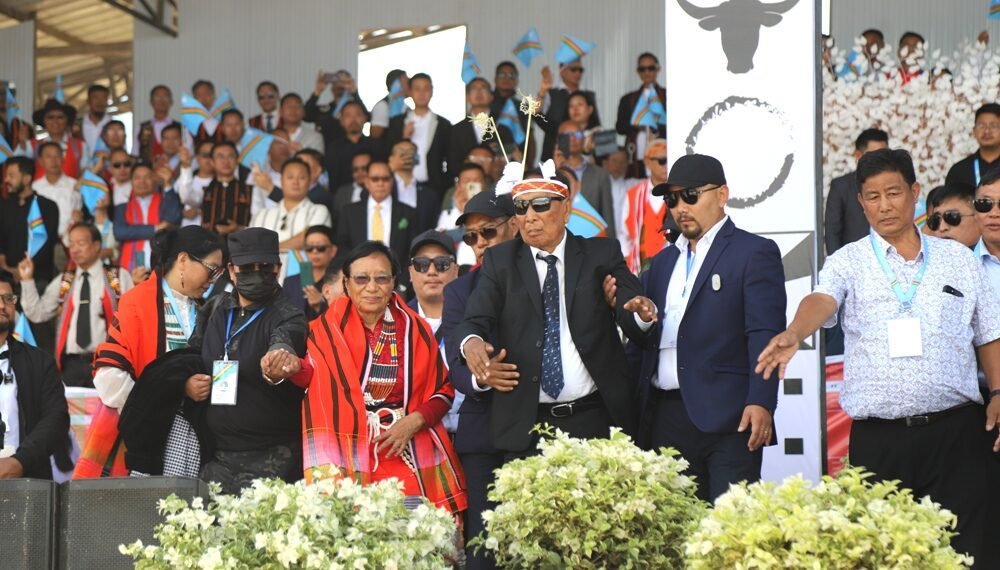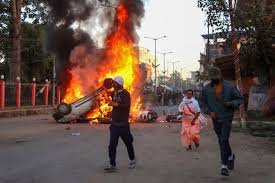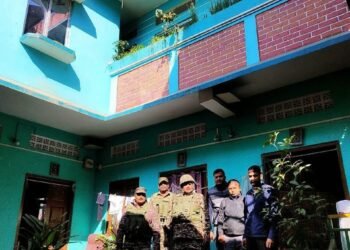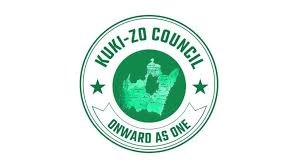Signed amid fanfare in 2015, the Framework Agreement between NSCN-IM and the Indian government remains sealed, its contents known only to a few.
BY Navin Upadhyay
October 23 — In his first public address in Ukhrul in nearly five decades, Thuingaleng Muivah, the Ato Kilonser (Prime Minister) of the National Socialist Council of Nagalim (Isak-Muivah), once again invoked the Framework Agreement — describing it as the cornerstone of the long and painful Indo-Naga peace process.
Delivered through his spouse Pakahao Muivah, who read out the message in Tangkhul language due to his “fatigue from travel,” the veteran Naga leader thanked the Tangkhul community for their “steadfast prayers,” expressed gratitude to God for the opportunity to reunite with his people, and declared, “We are not a lost people.” He appealed for unity among all Tangkhul churches, calling such harmony “the will of God,” and ended his message with the familiar cry — “Kuknalim!”
It was a moment charged with emotion and symbolism. Yet, for all the faith and fervor, Muivah offered no clarity on the very instrument he so passionately defends — the Framework Agreement, signed with the Government of India on August 3, 2015.
The Agreement Everyone Knows About — But No One Has Seen
Nearly a decade after its signing, the Framework Agreement remains shrouded in secrecy. It was announced amid fanfare by Prime Minister Narendra Modi, who hailed it as a “historic milestone” in India’s democratic journey. For the NSCN-IM, it was projected as the political acknowledgment of the Naga struggle — a recognition of their “unique history and position.”
Yet, despite these grand declarations, the full text of the agreement has never been made public. What little is known comes from a few lines quoted by both sides: that the Government of India recognizes the “unique history and position of the Nagas” and that both sides have agreed to share sovereignty within the framework of the Indian Union.
That, however, is where the public record ends. The rest — the substance of the deal, the commitments, the trade-offs, and the interpretation of “shared sovereignty” — remains locked away, hidden from the very people whose destiny it claims to define.
Even among Naga political circles, few have seen the document. Civil society groups, church leaders, and even other stakeholders like the Naga National Political Groups (NNPGs) have not been given access to the full text. The Indian government, for its part, maintains that confidentiality is essential to protect sensitive negotiations. But nearly ten years later, that justification rings hollow.
Under standard protocol, high-profile events in India see CRPF or state police enforce tight security. Yet, during Muivah’s historic homecoming, no Indian security officials were seen. The only uniformed personnel managing security were members of the Naga Army (NSCN-IM). https://t.co/x1cI4l5ZbO pic.twitter.com/q0aQaiCGXf
— WESEA Observer🔎 (@Weseaobserver) October 23, 2025
A Framework or a Phantom?
The secrecy has turned the Framework Agreement into something of a political phantom — invoked frequently, interpreted freely, and understood by no one outside the closed circle of negotiators.
Supporters of the NSCN-IM believe the agreement enshrines the principle of shared sovereignty — that Nagas would coexist with India but retain certain sovereign rights, including perhaps a separate flag and constitution. Critics, however, see it as a symbolic compromise, lacking any real concessions on sovereignty or integration of Naga-inhabited areas across state boundaries.
The Government of India, under successive interlocutors, has interpreted it narrowly — as a framework for final negotiations, not as a binding accord. The NSCN-IM insists otherwise. This divergence in interpretation has been the central reason why a final peace accord has eluded both sides for so long.
READ: Back Home After 50 years, Th. Muivah Warns Against Betrayal of Naga Mandate
Muivah’s Moral Responsibility
At 90, Thuingaleng Muivah stands as one of the last surviving architects of the Naga nationalist movement. For more than half a century, he has been the ideological and political face of Naga self-determination — respected, feared, and, increasingly, questioned.
His repeated invocations of the Framework Agreement as a divine mandate raise a simple but profound question: If it truly represents the will of the Naga people, why can’t the people themselves see it?
The Nagas have endured generations of conflict, displacement, and militarization — often in the name of a cause they were told to believe in. Today, they deserve the truth. To continue to treat the Framework Agreement as a sacred secret is not leadership; it is withholding the people’s right to know.
The NSCN-IM has often accused others — rival factions, Indian interlocutors, and politicians — of distorting facts or misleading the public. But the most dangerous distortion is silence. By keeping the agreement under wraps, Muivah risks turning a political milestone into a mythic relic, hollowed out of meaning.
The Cost of Secrecy
Every peace process thrives on trust. When information is withheld, trust erodes. In Nagaland and beyond, this has already happened. Rival Naga groups accuse the NSCN-IM of monopolizing negotiations. State leaders in Manipur, Assam, and Arunachal Pradesh remain deeply suspicious of any secret clause that could affect their territorial integrity. Meanwhile, younger Nagas — born after the insurgency years — are increasingly alienated from the opaque language of revolution and sovereignty.
The Framework Agreement was supposed to bring clarity and closure. Instead, it has become a source of confusion — a symbol of how a struggle for self-determination can lose transparency in the process of state negotiation.
Declassify It — Or Lose Its Meaning
If the Framework Agreement truly enshrines Naga dignity, declassify it. Let the Naga people read it, debate it, and decide if it reflects their aspirations. If not, then continuing to invoke it only deepens disillusionment.
At this stage in history, transparency is no threat to peace — secrecy is. The Naga people do not need another sermon about unity or divine will; they need truth.
It is time for Muivah to trust his people as much as he asks them to trust him. Only then can the Framework Agreement move from being a whispered legend to a living document.
Until that happens, the most repeated phrase in Naga politics will continue to sound hollow: “Framework Agreement — the cornerstone of peace.”
Because, as of today, it remains a cornerstone no one has ever seen.












